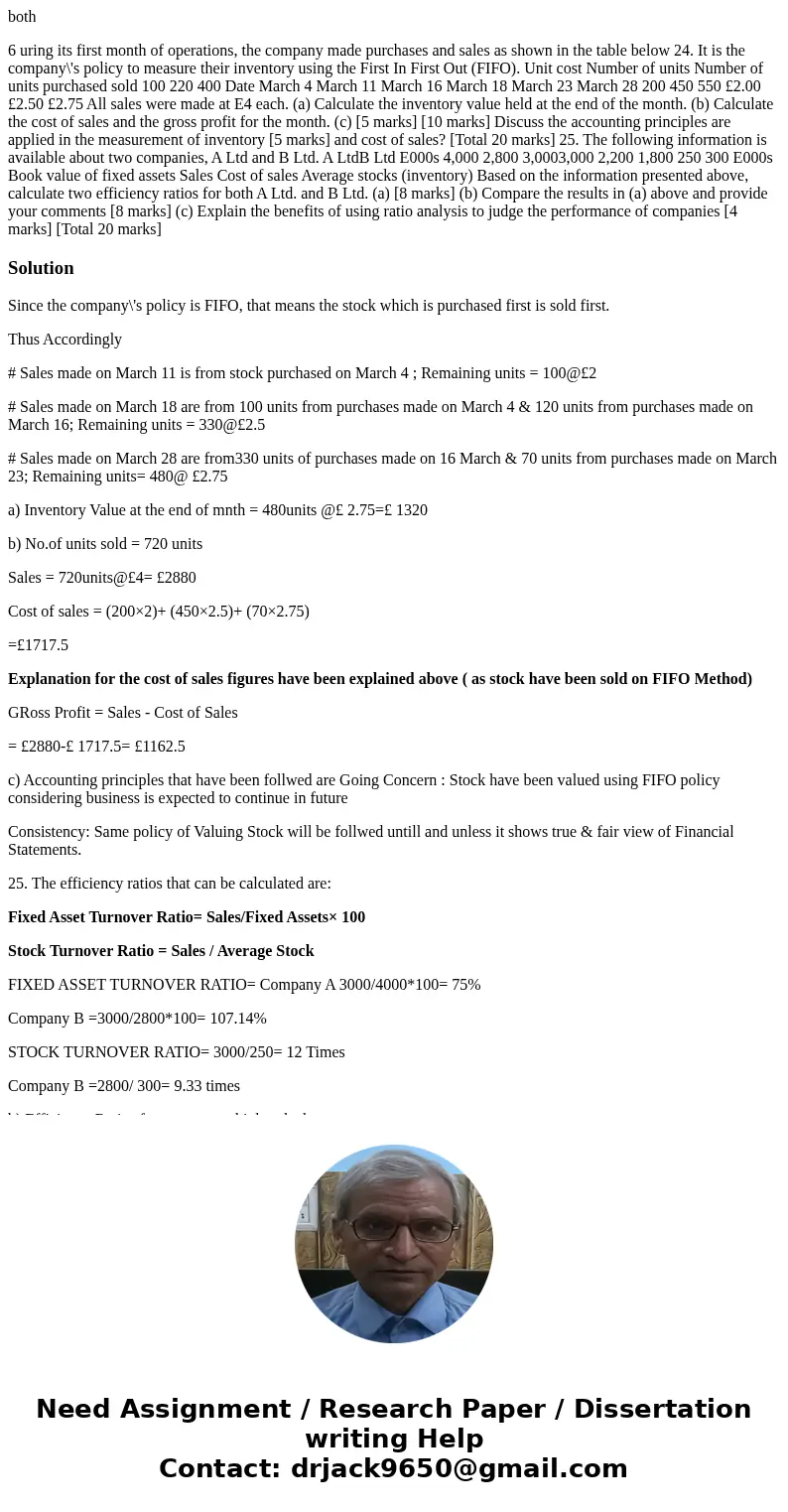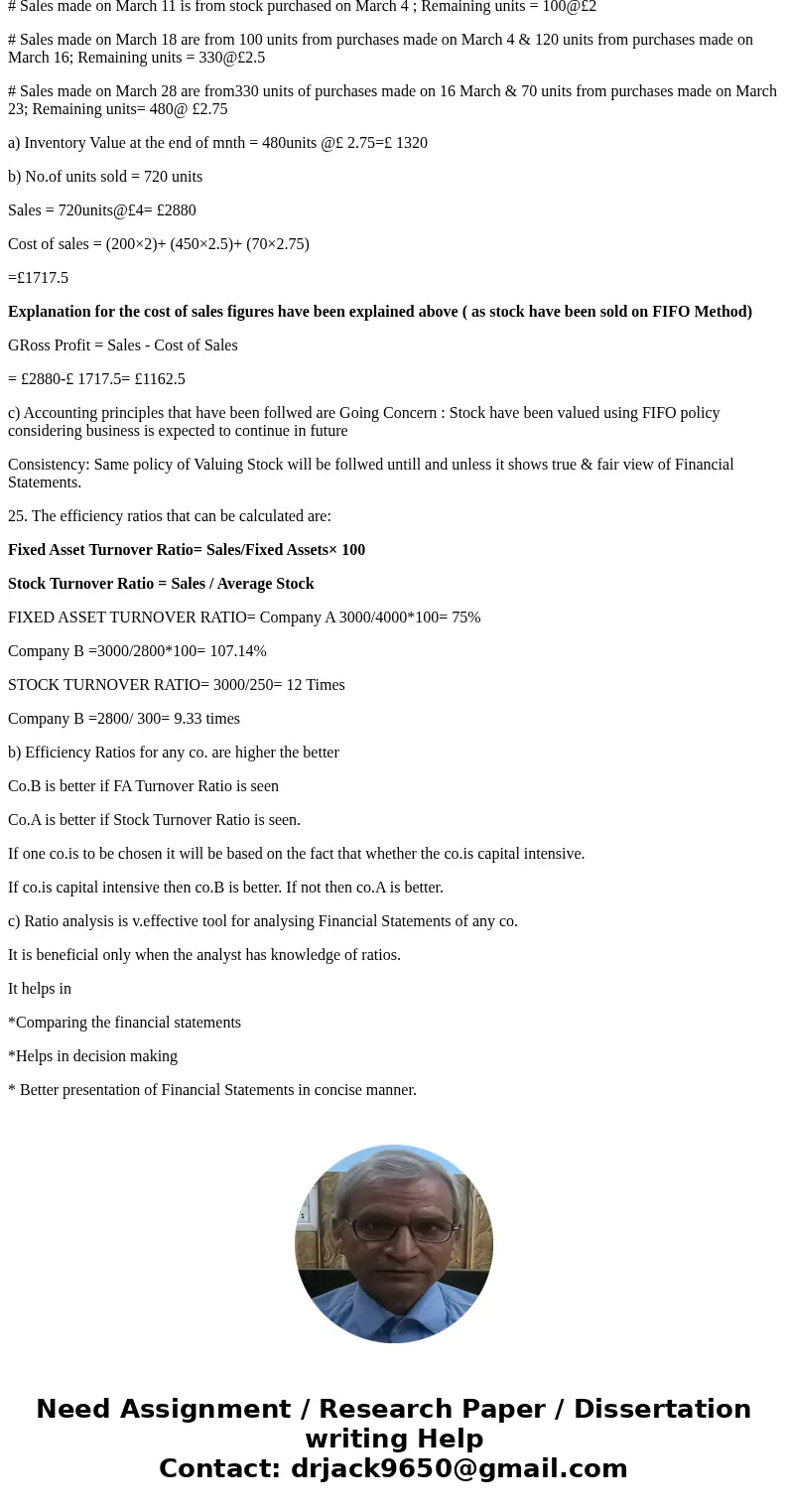both 6 uring its first month of operations the company made
both
6 uring its first month of operations, the company made purchases and sales as shown in the table below 24. It is the company\'s policy to measure their inventory using the First In First Out (FIFO). Unit cost Number of units Number of units purchased sold 100 220 400 Date March 4 March 11 March 16 March 18 March 23 March 28 200 450 550 £2.00 £2.50 £2.75 All sales were made at E4 each. (a) Calculate the inventory value held at the end of the month. (b) Calculate the cost of sales and the gross profit for the month. (c) [5 marks] [10 marks] Discuss the accounting principles are applied in the measurement of inventory [5 marks] and cost of sales? [Total 20 marks] 25. The following information is available about two companies, A Ltd and B Ltd. A LtdB Ltd E000s 4,000 2,800 3,0003,000 2,200 1,800 250 300 E000s Book value of fixed assets Sales Cost of sales Average stocks (inventory) Based on the information presented above, calculate two efficiency ratios for both A Ltd. and B Ltd. (a) [8 marks] (b) Compare the results in (a) above and provide your comments [8 marks] (c) Explain the benefits of using ratio analysis to judge the performance of companies [4 marks] [Total 20 marks]Solution
Since the company\'s policy is FIFO, that means the stock which is purchased first is sold first.
Thus Accordingly
# Sales made on March 11 is from stock purchased on March 4 ; Remaining units = 100@£2
# Sales made on March 18 are from 100 units from purchases made on March 4 & 120 units from purchases made on March 16; Remaining units = 330@£2.5
# Sales made on March 28 are from330 units of purchases made on 16 March & 70 units from purchases made on March 23; Remaining units= 480@ £2.75
a) Inventory Value at the end of mnth = 480units @£ 2.75=£ 1320
b) No.of units sold = 720 units
Sales = 720units@£4= £2880
Cost of sales = (200×2)+ (450×2.5)+ (70×2.75)
=£1717.5
Explanation for the cost of sales figures have been explained above ( as stock have been sold on FIFO Method)
GRoss Profit = Sales - Cost of Sales
= £2880-£ 1717.5= £1162.5
c) Accounting principles that have been follwed are Going Concern : Stock have been valued using FIFO policy considering business is expected to continue in future
Consistency: Same policy of Valuing Stock will be follwed untill and unless it shows true & fair view of Financial Statements.
25. The efficiency ratios that can be calculated are:
Fixed Asset Turnover Ratio= Sales/Fixed Assets× 100
Stock Turnover Ratio = Sales / Average Stock
FIXED ASSET TURNOVER RATIO= Company A 3000/4000*100= 75%
Company B =3000/2800*100= 107.14%
STOCK TURNOVER RATIO= 3000/250= 12 Times
Company B =2800/ 300= 9.33 times
b) Efficiency Ratios for any co. are higher the better
Co.B is better if FA Turnover Ratio is seen
Co.A is better if Stock Turnover Ratio is seen.
If one co.is to be chosen it will be based on the fact that whether the co.is capital intensive.
If co.is capital intensive then co.B is better. If not then co.A is better.
c) Ratio analysis is v.effective tool for analysing Financial Statements of any co.
It is beneficial only when the analyst has knowledge of ratios.
It helps in
*Comparing the financial statements
*Helps in decision making
* Better presentation of Financial Statements in concise manner.


 Homework Sourse
Homework Sourse